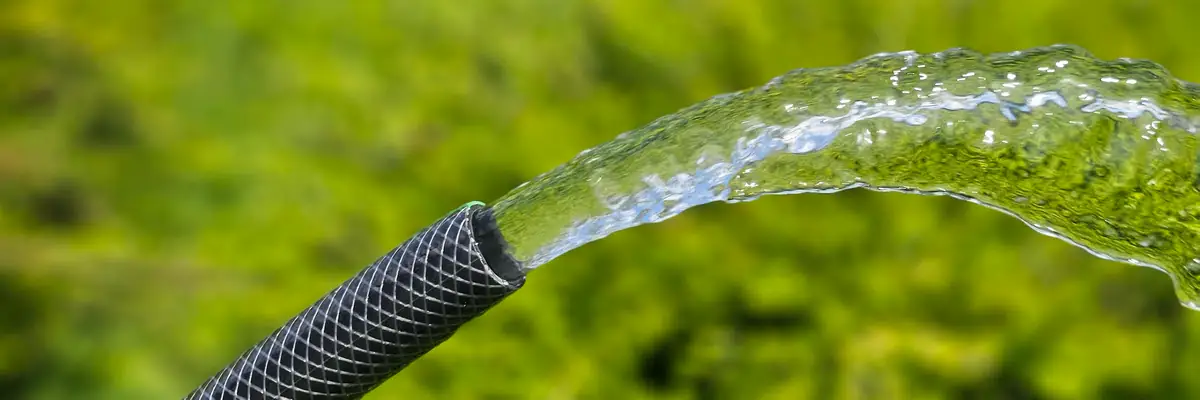How to water a garden and save water

Estimated reading time: 5 minutes
We will explain to you in this article how to water a garden properly and at the same time save water. Even if it seems contradictory, we promise to show you some simple and effective techniques to achieve this goal.
All gardeners know that spring, summer, and autumn are becoming more and more complicated periods to manage with the increase in temperatures outside. In addition, droughts are increasingly frequent. Finally, we spend our time literally playing firefighters to come to the aid of the residents of our newly planted or old gardens.
Water a garden like pros
When we started to create the Vallonchêne Garden, almost 20 years ago, our land was devoid of shrubs and trees. There was only the big bicentenary oak and a few horn beams and ash trees. So, we had to install complete vegetation.
In addition, at the nursery, we had to learn to administer water resources sparingly for the production of our plants. We would like to share with you our experiences, which have allowed us to install a garden of more than five hectares today.
How to save irrigation water
First, you must know the techniques to save the increasingly scarce water resource:
- Mulch
Originally, mulch consisted of a mixture of dead leaves and pine needles. Therfore, remember not to throw dead leaves in the green waste in fall!
If you do not have these ingredients, use bark mulches, for example.
Cover your plantations with a thick layer of 15 to 20 cm.
Mulching preserves the soil moist longer, since it greatly reduces water evaporation by creating a cover. In addition, it keeps soil temperature lower by avoiding direct sunlight.
Furthermore, it also avoids the formation of crusts which prevent rain or irrigation water from penetrating the soil and reaching the roots.
Finally, mulch not only lowers the frequency of watering, but actually limits the development of weeds! So, you will have less to weed. - Do not water during the day, except in extreme cases. Water in the evening so that the soil can soak up the water. Then, it can be released the next day when the sun heats up.
At the same time, this allows plants to store moisture to better withstand daytime heat. - Use a drip system to better target watering locally and adapt the quantities of water according to the plant. For this, use drippers with a more or less important flow.
- Avoid peat and heather soil
Peat and heather earth are often recommended in horticultural books and television programs to lighten the soil. To lighten the soil, you can also use compost. Thus, you will simultaneously provide nutrients for the plants.
But, why not use peat or heather earth? Indeed, heather soil contains a high percentage of peat. The problem with peat is its extreme difficulty in being moistened again once it is dry. Especially since this happens easily and frequently in dry periods.
Finally, scientific studies have proven that peat carries certain diseases such as verticillium wilt, which is fatal to Japanese maples.
Where should you water?
For plants that are planted in full ground for less than two years and perennials, water directly at the base of the plant.
For older plants, if you notice suffering due to lack of water, they should be watered more widely depending on the development of their roots.
When should you water the garden?
Often, gardening beginners wait for plants to show the first signs of lack of water. This can be manifested by the leaves starting to wilt. This is a terrible practice, as it creates considerable stress for the plant and does not work for plants with tougher foliage (usually evergreens). Such repeated stress can even lead to the death of the plant. Every so often, the watering also comes too late then.
To know easily if the plants in full ground need watering, buy a rain gauge for a few euros. It will tell you how much rain has fallen. If you do not register at least 15 millimeters of water over the week, you must water. One millimeter corresponds to 1 liter of water per square meter.
Finally, for potted plants, just feel with your finger to see if the substrate is moist. Weigh the pot if necessary.
How much water do you need to water the garden?
While it is easy to determine how much to water a potted plant, it is very complicated to determine how much to water a plant in full ground:
- For perennials
Water at least 5 liters per week and at once. - For shrubs
Water at least 10 liters per week and at once. - For the trees
Water at least 20 to 50 liters of water per week and at once.
TIP: We use garden hoses frequently, or we would end up with monkey arms. However, it is then difficult to know how much water the plant has received. This is very variable depending on the flow of the pump or the water network of the house.
To know how to dose with a hose, start by filling a garden watering can with your garden hose. Count all this time until filled. This way, you get an idea how far to count to administer a full watering can.
Subscribe to our free newsletter!
Subscribe to our free newsletter and automatically receive our new publications on plants and gardening in general. If you no longer want it, you can unsubscribe with a simple click.

